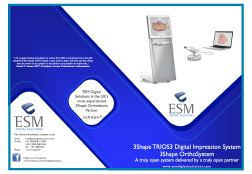A Few Words About Retention and Relapse
It seems like every time I mention what I do for a living, I hear stories from half the people around me about how they had orthodontic treatment and have since relapsed, most back to the point where it was as if they never had braces.
The fact is long term orthodontic satisfaction rates are abysmal. In an article published in 2013 by the Cochrane Oral Health Group, a study found that the long-term satisfaction rate after 10 years was 30%-50%. After 20 years, that drops to 10%.
I see it getting even worse.
As you know, the main reason for relapse is people stop wearing their retainers. Many people come out of treatment not knowing that retention is for life. Others may lose or break their retainers and never make it back to you.
The growing popularity of “clear retainers” means frequent replacements. Many orthodontists are even moving towards a post treatment approach of “two clear retainers and done.” The standard clear retainers just simply do not last. 6-12 months is usual, under 6 months if the patient grinds.
Hawley Retainers are simply a better option. They last longer (5+ years), they allow for the natural occlusion, and they will not lead to an open bite as has been reported with the use of clear retainers. With our Duraloy option, the 5+ years is guaranteed on the wirework. With our laser welding, the weld joints are also guaranteed. We have seen what kids do to retainers, the “oral gymnastics,” so will never offer a guarantee on acrylic.
Though highly unusual, I did just hear from an orthodontist about a Hawley Retainer check they did on with a patient from 17 years ago. The Hawley still had some life left in it and the patient still had a perfect bite with excellent alignment.
Some doctors are turning towards labial acrylic for fewer adjustments. Typically clear, labial acrylic can be used to highlight the retainer with colors on the bow, or it can used to camouflage the retainer by using tooth shade acrylic—tooth shade guides are available upon request.
Another option is the Clear Bow Retainer: it combines the aesthetic qualities of a clear retainer with all of the benefits and durability of a Hawley.
Many patients, however, are demanding clear retainers. If this is happening in your practice, there are better options to care for their long-term retention needs.
We are moving away from Essix to offer only Erkodent and Zendura material for clear retainers, better alternatives that last longer and the Erkodent is ISO approved. Zendura is simply a better material, made differently and proven to be more durable while also being thinner: .76mm as opposed to the normal 1 mm (.040).
We also offer InvisX Retainers, a combination of Zendura clear retainers with a thicker, softer, colored palette—less likely to be lost or used as chewing gum. They are also more fun for the patient.
Our Hassle Free Replacement Program can be continued indefinitely. We scan in the patient’s impressions or casts, save them, and then can print them on demand and have a new set of retainers to you or them within a week. Clear retainers can be mailed to the patient; Hawleys must be sent back to you at your office.
DIY therapies, which I highly discourage, are gaining in popularity. With the advances in technology, companies are forming that bypass dental professionals entirely to treat orthodontic relapse and minor corrective cases—something that I also highly discourage.
There has always been a need for a long-term solution, and this need is growing. Will you fill that need or will a DIY company fill it?
— The Lab Guy
PS. Coming soon: Our Retention and Relapse brochures for your patients. A sample can be found on our website.

